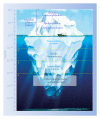Sample preparation techniques for the untargeted LC-MS-based discovery of peptides in complex biological matrices
- PMID: 22203783
- PMCID: PMC3238806
- DOI: 10.1155/2011/245291
Sample preparation techniques for the untargeted LC-MS-based discovery of peptides in complex biological matrices
Abstract
Although big progress has been made in sample pretreatment over the last years, there are still considerable limitations when it comes to overcoming complexity and dynamic range problems associated with peptide analyses from biological matrices. Being the little brother of proteomics, peptidomics is a relatively new field of research aiming at the direct analysis of the small proteins, called peptides, many of which are not amenable for typical trypsin-based analytics. In this paper, we present an overview of different techniques and methods currently used for reducing a sample's complexity and for concentrating low abundant compounds to enable successful peptidome analysis. We focus on techniques which can be employed prior to liquid chromatography coupled to mass spectrometry for peptide detection and identification and indicate their advantages as well as their shortcomings when it comes to the untargeted analysis of native peptides from complex biological matrices.
Figures




Similar articles
-
Clinical proteomics: liquid chromatography-mass spectrometry purification systems.Methods Mol Biol. 2011;681:473-83. doi: 10.1007/978-1-60761-913-0_28. Methods Mol Biol. 2011. PMID: 20978984
-
Elimination of systematic mass measurement errors in liquid chromatography-mass spectrometry based proteomics using regression models and a priori partial knowledge of the sample content.Anal Chem. 2008 Feb 1;80(3):693-706. doi: 10.1021/ac701863d. Epub 2007 Dec 29. Anal Chem. 2008. PMID: 18163597 Free PMC article.
-
Optimization for Peptide Sample Preparation for Urine Peptidomics.Methods Mol Biol. 2018;1788:63-72. doi: 10.1007/7651_2017_90. Methods Mol Biol. 2018. PMID: 29623538
-
Sample preparation strategies for targeted proteomics via proteotypic peptides in human blood using liquid chromatography tandem mass spectrometry.Proteomics Clin Appl. 2015 Feb;9(1-2):5-16. doi: 10.1002/prca.201400121. Epub 2014 Dec 28. Proteomics Clin Appl. 2015. PMID: 25418444 Review.
-
Analysis of protein composition using multidimensional chromatography and mass spectrometry.Curr Protoc Protein Sci. 2014 Nov 3;78:23.1.1-23.1.25. doi: 10.1002/0471140864.ps2301s78. Curr Protoc Protein Sci. 2014. PMID: 25367006 Review.
Cited by
-
Peptidomics for the discovery and characterization of neuropeptides and hormones.Trends Pharmacol Sci. 2015 Sep;36(9):579-86. doi: 10.1016/j.tips.2015.05.009. Epub 2015 Jul 1. Trends Pharmacol Sci. 2015. PMID: 26143240 Free PMC article. Review.
-
Isolation and characterization of glycosylated neuropeptides.Methods Enzymol. 2019;626:147-202. doi: 10.1016/bs.mie.2019.07.032. Epub 2019 Aug 12. Methods Enzymol. 2019. PMID: 31606074 Free PMC article.
-
Peptidomics.Nat Rev Methods Primers. 2023 Mar 30;3:25. doi: 10.1038/s43586-023-00205-2. Nat Rev Methods Primers. 2023. PMID: 37250919 Free PMC article.
-
A Brief Analysis of Proteomic Profile Changes during Zebrafish Regeneration.Biomolecules. 2021 Dec 27;12(1):35. doi: 10.3390/biom12010035. Biomolecules. 2021. PMID: 35053182 Free PMC article.
-
Development of a novel nanoflow liquid chromatography-parallel reaction monitoring mass spectrometry-based method for quantification of angiotensin peptides in HUVEC cultures.PeerJ. 2020 Sep 15;8:e9941. doi: 10.7717/peerj.9941. eCollection 2020. PeerJ. 2020. PMID: 32983648 Free PMC article.
References
-
- Schrader M, Schulz-Knappe P. Peptidomics technologies for human body fluids. Trends in Biotechnology. 2001;19(supplement 10):S55–S60. - PubMed
-
- Hu L, Ye M, Zou H. Recent advances in mass spectrometry-based peptidome analysis. Expert Review of Proteomics. 2009;6(4):433–447. - PubMed
-
- Jimenez CR, Piersma S, Pham TV. High-throughput and targeted in-depth mass spectrometry-based approaches for biofluid profiling and biomarker discovery. Biomarkers in Medicine. 2007;1(4):541–565. - PubMed
-
- Jiang X, Ye M, Zou H. Technologies and methods for sample pretreatment in efficient proteome and peptidome analysis. Proteomics. 2008;8(4):686–705. - PubMed
-
- Schulz-Knappe P, Zucht HD, Heine G, Jürgens M, Hess R, Schrader M. Peptidomics: the comprehensive analysis of peptides in complex biological mixtures. Combinatorial Chemistry and High Throughput Screening. 2001;4(2):207–217. - PubMed
Publication types
MeSH terms
Substances
LinkOut - more resources
Full Text Sources

